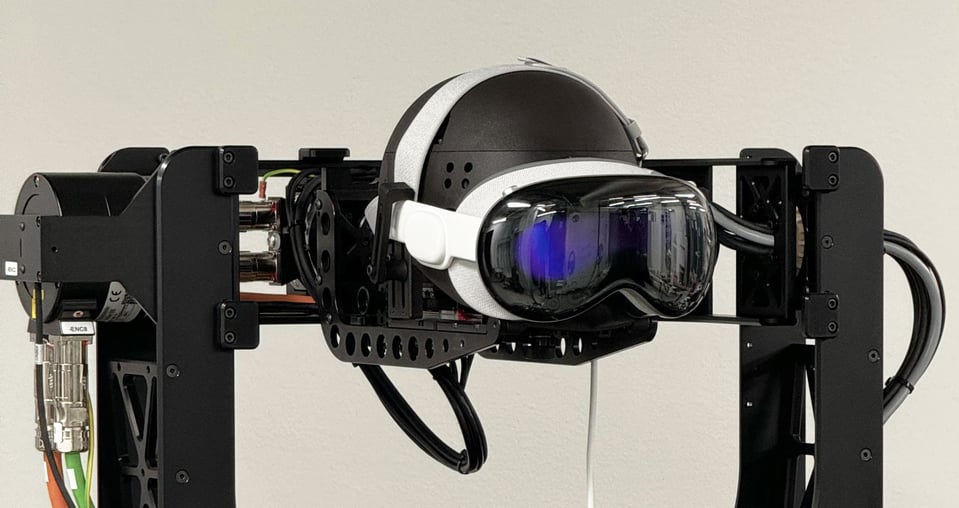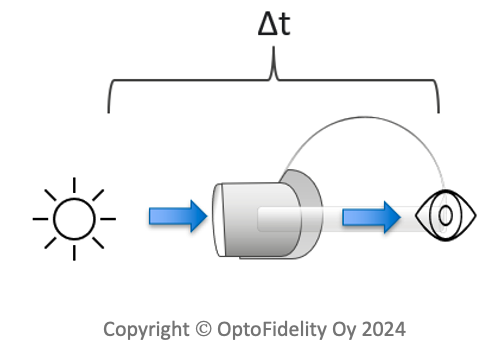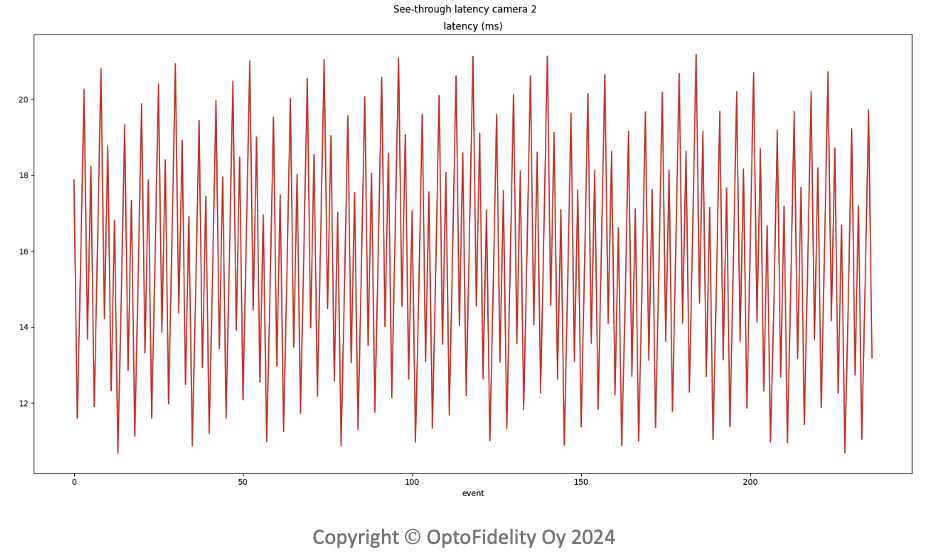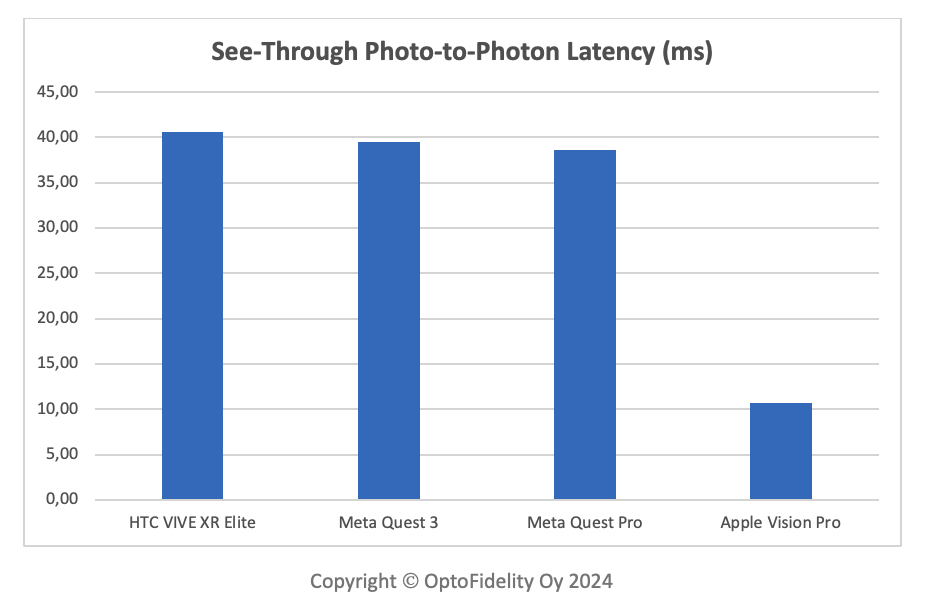
Blogs
Apple Vision Pro Benchmark Test 1: See-Through Latency, Photon-to-Photon
A Benchmark comparison with OptoFidelity BUDDY Test System among HTC VIVE XR Elite, Meta Quest 3, Meta Quest Pro, and Apple Vision Pro
Mixed reality glasses are complex devices made of multiple components that work together, aiming for total immersion. One of the biggest challenges with MR devices has been the see-through latency. With the new Apple Vision Pro now out, we wanted to see how well it compares to other MR devices out there.
What is Photon-to-Photon Latency
Head-mounted displays Photon-to-photon latency describes the time it takes for the image to be transferred through the headset, to the user’s vision. When measuring the latency, we calculate the time difference between the lit of the light and the sense of that light on the location of the perceiver.

How we performed the testing
We used OptoFidelity BUDDY 6 tester with See-Through Measurement LED target add-on. While the theory of the measurement is quite straightforward, there are a few details to take note of. Within the system, there are several frequencies involved. The frequency of the blinking target, the frequency of the Device Under Test (DUT) see-through camera, the DUT display frequency, and the frequency of the sensor.

BUDDY 6 backlight sensor has a high enough frequency (100 kHz) to capture the relevant changes. The test length needs to be long enough and the LED blinking rate suitable so that the sensor can capture the waveform generated by non-synchronized components running on their individual frequencies. The picture below shows a measurement set from one Apple Vision Pro measurement run.

While it can be controversial what measurement value should be used as a result, in this case, we decided to use the min. latency values, as those have the least to do with any setup parameters. Those represent the lowest latency that the DUT generates when its cameras and displays run on their individual frequencies.
Benchmark Results
And then to the long-awaited results. Below, you can see the results from HTC VIVE XR Elite, Meta Quest 3, Meta Quest Pro, and Apple Vision Pro 
The first and most notable observation is the Apple Vision Pro’s extremely low latency of ~11ms. Apple has announced their see-through latency being 12ms and this test supports that claim. The competitors' results in the range of 35-40ms represent a previously considered good standard level.
We can, therefore, verify that Apple’s claim of their groundbreaking reduction of see-through latency is true.
Check our other Apple Vision Pro Benchmark Tests:
Written by


